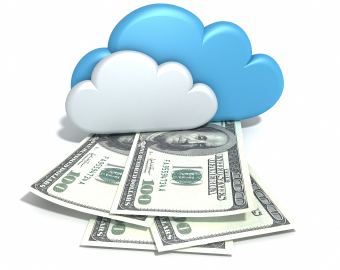COVID Hurts Overall IT Spending, Cloud Benefits

The pandemic was expected to slow global IT spending. The only questions being by how much and for how long. Hard numbers for the beginning of this year are coming in, with declines from a year ago approaching double digits along with tempering of cloud and colocation investments.
Among the most closely watched results are from Gartner Inc., which projects and 8 percent decline in global IT spending from 2019. The pandemic and its worldwide economic impact have shifted CIO’s priorities from expansion and upgrades to “mission critical” technology and services, Gartner said.
Datacenter equipment spending was hardest hit, declining 9.7 percent sequentially. The IT category also includes enterprise software, devices and network services.
Among the few bright spots was spending on cloud services, driven largely by pandemic-driven remote work. While sub-segments like public cloud services fall into multiple categories, the market tracker reported a hefty 19 percent annual jump in spending for cloud services.
That total likely soften COVID-19’s economic impact on other IT sectors.
Any rebound in IT spending is unlikely to track traditional seasonal fluctuations. “Recovery will not follow previous patterns as the forces behind this recession will create both supply side and demand side shocks as the public health, social and commercial restrictions begin to lessen,” said Gartner’s John-David Lovelock.
“Recovery requires a change in mindset for most organizations,” he added.
Meanwhile, a narrower forecast focusing on enterprise software budgets also predicts a 6.9 percent decline in global spending this year. Market tracker Statista reported that the decade-long run that doubled software revenues will be blunted by the economic efforts of the pandemic.
COVID-19 has also constrained growth in datacenter colocation services. Market analyst Omdia this week revised downward its growth forecast for colocation services, citing economic pressure exerted by the pandemic. While those services are forecast to continue expanding this year, Omdia cut its growth forecast to 6.2 percent, sequentially.
The category, which includes facilities and interconnects, is forecast to continue rising at roughly the same annual rate through 2024, Omdia said.
So far, colocation providers said they have seen an uptick in demand in response to the pandemic, with only a limited number of customers seeking rent concessions.
Colocation “providers should remain in pretty good shape because they cater to larger businesses and high-credit tenants, which represent a more stable customer base,” said Alan Howard, Omdia’s cloud and datacenter analyst.
Operators are also benefitting from providing cloud connections to millions of remote workers and home schoolers which, Howard added, “allow much of the world to keep operating despite the pandemic restrictions.”
Related
George Leopold has written about science and technology for more than 30 years, focusing on electronics and aerospace technology. He previously served as executive editor of Electronic Engineering Times. Leopold is the author of "Calculated Risk: The Supersonic Life and Times of Gus Grissom" (Purdue University Press, 2016).










